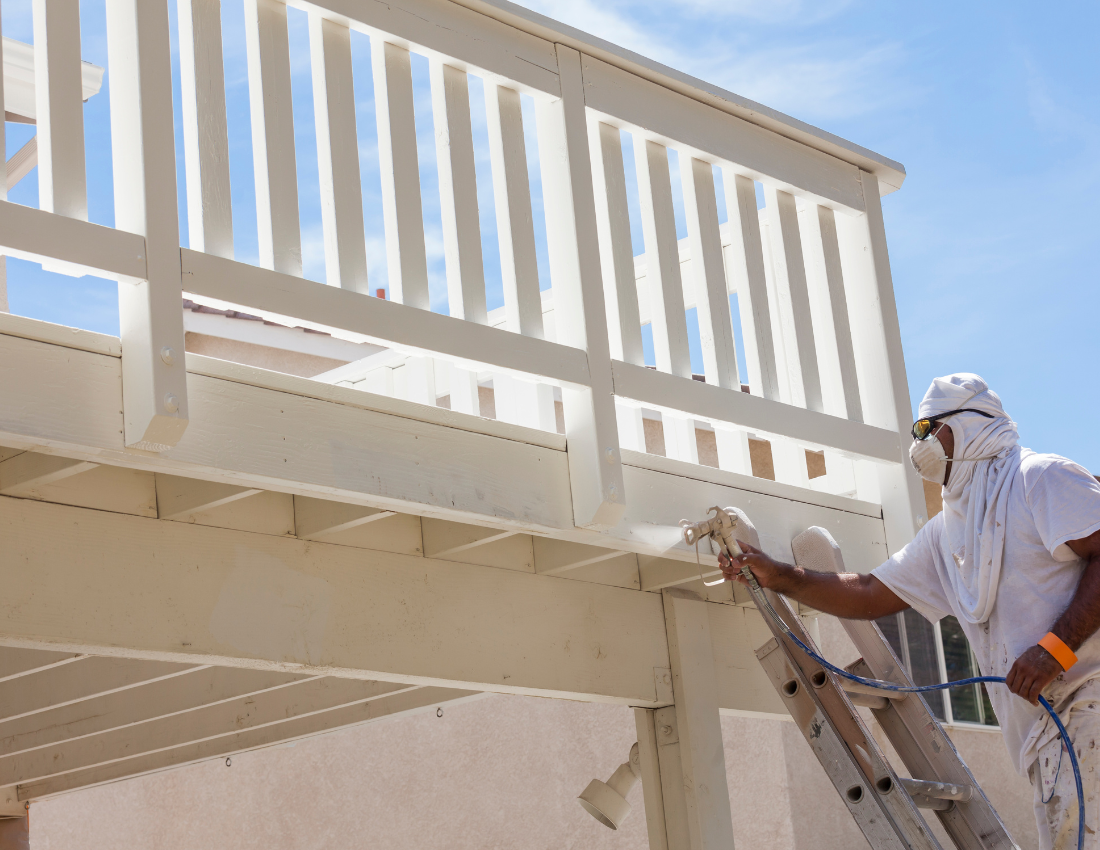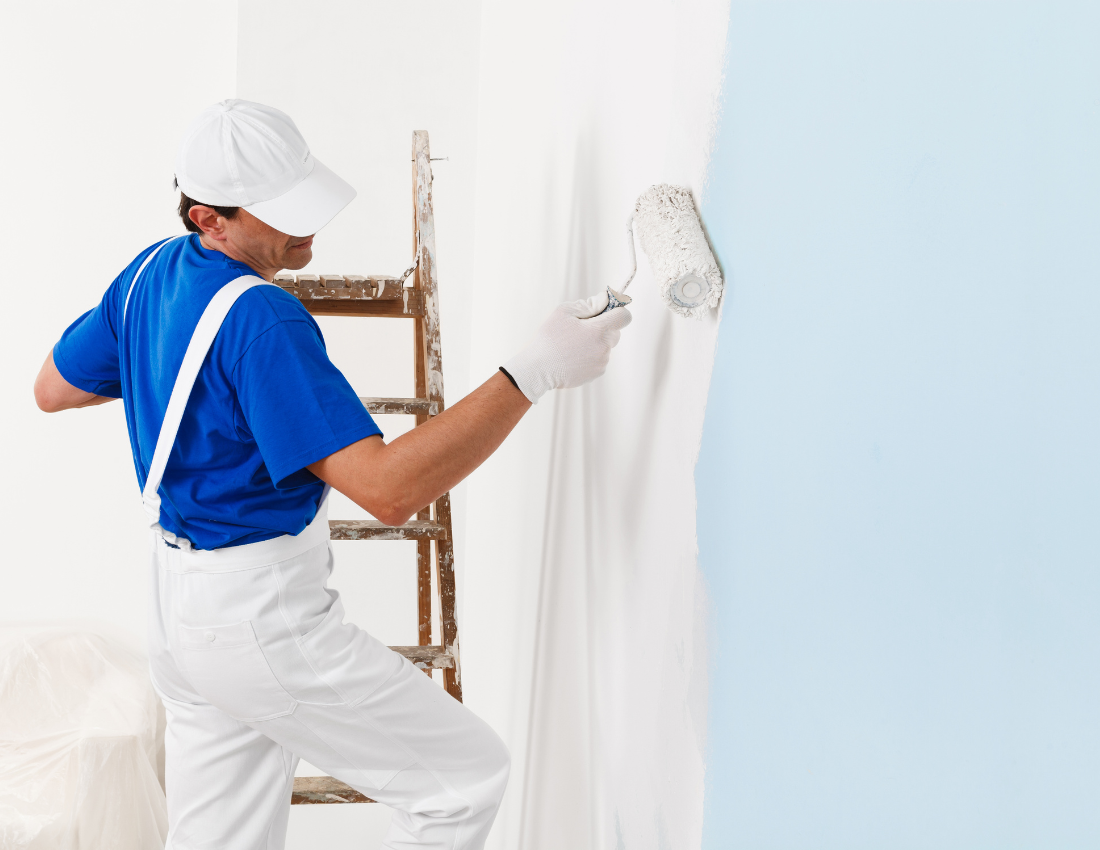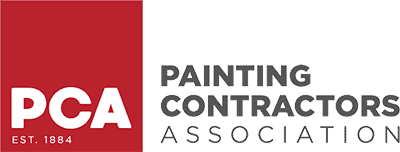When it’s time to repaint your home, the tools you choose matter just as much as the color. The debate over roller painting vs spray painting is something every homeowner faces.
Do you go for the speed and smooth coverage of a paint sprayer or the precision and control of a roller?
The answer depends on the size of your project, the type of surface you’re painting, and how much prep work you’re willing to do.
If you’re working on exterior brick, stucco, or fences, a sprayer can get the job done quickly. But if you’re refreshing interior walls, ceilings, or trim, a roller might be the smarter choice.
If you live in Great Falls, VA, and want the best results for your home painting project, understanding the pros and cons of each method will save you time, money, and frustration. Let’s break it down so you can pick the right approach for your space.
Key Takeaways:
- Paint sprayers are best for large surfaces, textured walls, and exterior projects, but they require extensive masking and use more paint.
- Rollers provide better control, minimal mess, and are great for interior walls, ceilings, and smaller projects with fewer prep requirements.
- Sprayers deliver a smooth, factory-like finish on brick, stucco, cabinetry, and garage doors, while rollers offer consistent coverage with less waste.
- If speed is your priority, go with a sprayer; if precision and cost-efficiency matter more, a roller is the smarter choice.
Why a Paint Sprayer Works Best for Certain Projects

If you need to paint large areas quickly, a sprayer is the way to go. Paint sprayers apply an even mist of paint that covers wide surfaces without brush strokes or roller marks. This makes them especially useful for exterior painting projects and textured surfaces.
Best Uses for Spray Painting
- Exterior Walls & Surfaces: If you’re painting brick, siding, stucco, or masonry, a sprayer allows for quick, even coverage, getting into crevices and rough textures that rollers struggle with.
- Ceilings & Hard-to-Reach Areas: When dealing with popcorn ceilings, high ceilings, or intricate crown molding, a sprayer is the better option. It ensures even coverage without the streaks or patches that rollers can leave behind.
- Cabinetry & Furniture: A sprayer creates a factory-smooth finish on kitchen cabinets, built-ins, and furniture, avoiding roller marks and brush strokes.
- Large Outdoor Projects: Painting fences, garage doors, or sheds? A sprayer allows you to coat these surfaces faster and with fewer touch-ups.
Challenges of Using a Paint Sprayer
Sprayers can make a job easier in some ways, but they also come with drawbacks. Here’s what to consider before using one:
- Extensive Prep Work: Since sprayers create overspray, everything around the painting area needs to be masked off with plastic, tape, or drop cloths. Windows, baseboards, and even floors must be protected to avoid accidental paint mist.
- Higher Paint Usage: A sprayer uses more paint than a roller, since some of it disperses into the air instead of sticking to the surface. This makes paint selection even more important. Learn more about the differences between oil-based paint vs water-based paint before starting your project.
- Steep Learning Curve: Getting even, drip-free coverage with a sprayer requires skill. Beginners often end up with uneven coats, runs, or patchy areas if they don’t apply the paint correctly.
If you don’t have experience with a paint sprayer, it might be worth hiring house painters in Great Falls VA to get a smooth, professional finish.
Why Roller Painting is the Better Choice for Most Homeowners

While a sprayer is great for large areas, roller painting is often the better option for indoor spaces. A paint roller gives you control, precision, and minimal mess, making it ideal for walls, ceilings, and trim work.
Best Uses for Roller Painting
- Interior Walls & Ceilings: A roller ensures even coverage and consistent color distribution on drywall, making it a go-to method for painting bedrooms, living rooms, and hallways. If you’re considering a color update, take a look at the latest house painting trends for inspiration on modern shades and finishes.
- Occupied Homes: If you’re painting inside a furnished space, a roller reduces the need for extensive masking. Unlike a sprayer, it keeps paint where you want it—not floating around the room.
- Touch-Ups & Small Projects: Need to repaint a single wall or repair scuff marks? A roller makes it easier to blend new paint with the old without leaving visible transitions.
- Budget-Friendly Option: A roller requires less paint, fewer supplies, and minimal equipment, making it the most affordable choice for DIY painters.
Common Mistakes to Avoid with a Roller
Even though rolling paint is easier than spraying, there are still some house painting mistakes to watch out for:
- Skipping the Primer: Primer helps paint adhere better and prevents streaks or blotchy patches.
- Not Using the Right Roller Cover: The thickness of the roller nap affects how the paint goes on. Short naps are better for smooth surfaces, while longer naps help cover textured walls or ceilings.
- Applying Too Much Pressure: Pressing down too hard on the roller can leave streaks or uneven coverage. Let the roller do the work with light, even strokes.
Roller Painting vs Spray Painting: Which One Should You Choose?
Your decision depends on the size of your house painting project, the surface you’re painting, and how much prep work you’re willing to do. Here’s a quick comparison:
| Feature | Spray Painting | Roller Painting |
|---|---|---|
| Best For | Large surfaces, exterior walls, textured surfaces | Interior walls, ceilings, small rooms |
| Application Speed | Covers large areas quickly | Takes longer but offers better control |
| Finish Quality | Smooth, even coat—ideal for detailed surfaces | Can have slight texture but blends well |
| Paint Efficiency | Uses more paint due to overspray | Less waste, better coverage |
| Prep Work | Requires extensive masking | Minimal masking needed |
| Ease of Use | Takes practice for even coverage | Beginner-friendly and easy to control |
| Cost | Requires more paint and equipment | More budget-friendly |
| Touch-Ups | Difficult to fix without re-spraying | Easy to blend and touch up small areas |
If you’re working on large outdoor surfaces, a paint sprayer is the faster option. But if you’re painting inside your home, a roller offers better control and less prep work.
Our Painting Process: How JC Custom Painting LLC Can Help
At JC Custom Painting LLC, we provide expert painting services in Great Falls, VA, with a process designed to give your home a flawless finish:
- Surface Preparation: We clean, sand, and prime surfaces to ensure proper adhesion and durability.
- Professional Masking & Protection: Floors, baseboards, and windows are covered with drop cloths and painter’s tape.
- Expert Application: Whether we use a roller for smooth interior walls or a sprayer for textured surfaces, we apply each coat with precision.
- Final Touch-Ups & Cleanup: We do a final inspection, remove masking materials, and leave your space spotless.
Now that you understand the differences between roller painting vs spray painting, you can confidently choose the right method for your home.
Need help from house painters in Great Falls VA? Our team at JC Custom Painting LLC delivers expert results with interior and exterior painting services. We proudly serve Fairfax, Loudoun, Middleburg, VA, and the surrounding areas.
Call us at 571-575-6818 for a FREE estimate today!

